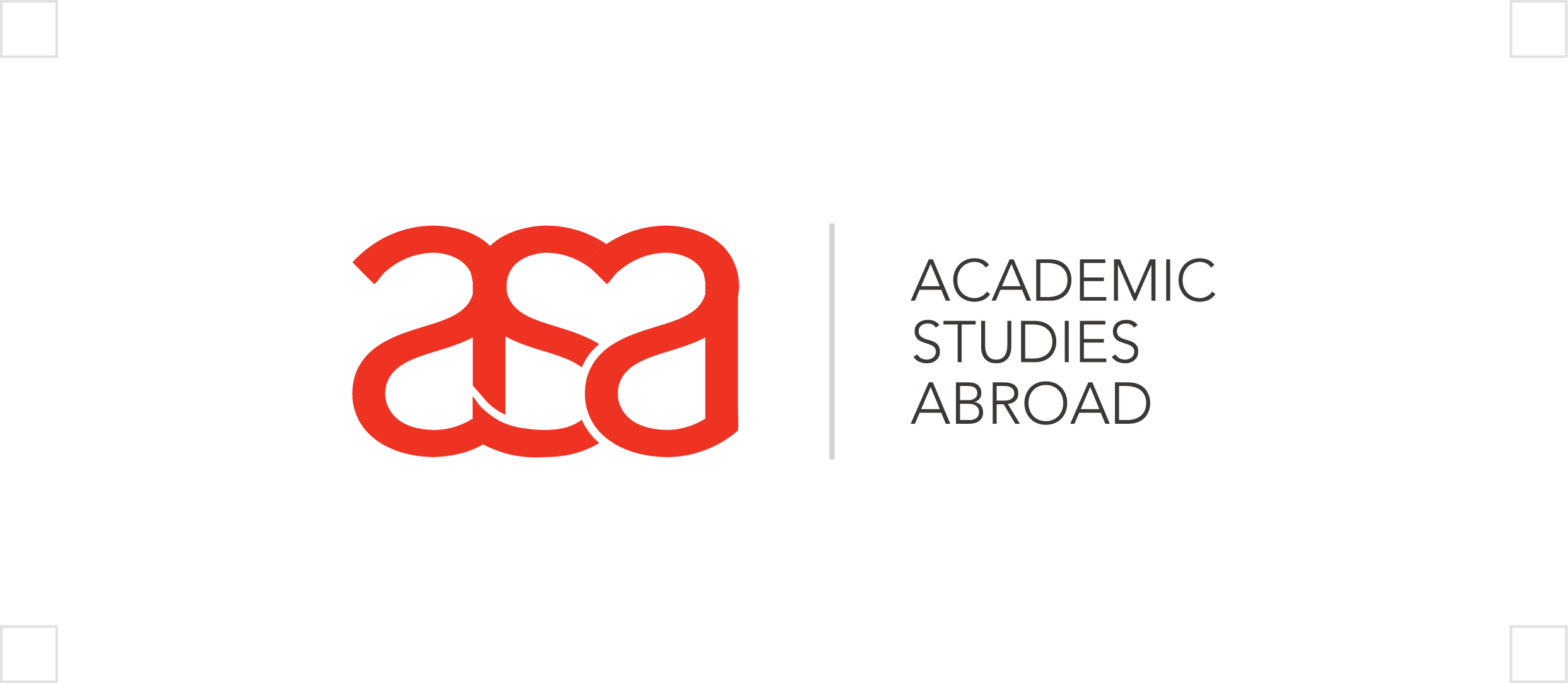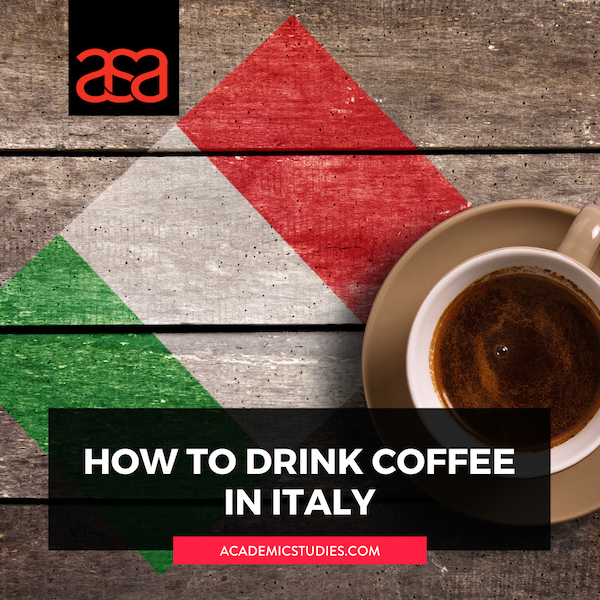How to Drink Coffee in Italy
Italians take their coffee seriously, and it’s an important part of the culture. If you’re a coffee lover and you’re planning a study abroad adventure in Italy, you’ll want to read on to find out how to order your daily fuel…like a local!
Ordering a coffee is a great low-pressure way to practice your Italian in a real-world situation too.
Where to order coffee
To find coffee, you’ll usually be looking for a “bar”, the Italian version of a café. Outside the sign might say “Bar” or it could say “Caffé.
Types of coffees
Italians tend to keep their coffee experience simple. And serving sizes are much smaller.
UN CAFFÈ. For a shot of espresso, it’s “un caffè”. This is the foundation for most other coffee drinks. If you ask for an espresso, it will mark you as a tourist.
CAFFÈ DECA. A shot of decaf can be a “caffè deca” or “decaffeinato”.
CAFFÈ DOPPIO. For a double shot, you’ll want “caffè doppio”. Most locals would more likely order two single rounds rather than a double, so it’s said this is probably catering to tourists.
CAFFÈ LUNGO. For something similar to the filtered coffee a lot of Americans drink, you’re looking for a “caffè lungo” – a “long coffee”. This is a more watered-down, milder version of a “caffè”.
CAFFÈ CORTO. For a denser version of the “caffè”, which has even less water, you can ask for a “caffè corto” or a “ristretto”.
CAPPUCCINO. One of the most popular milky drinks (but never after a meal) is a “cappuccino” which has equal parts coffee, steamed milk and foam. To set expectations, it’s smaller than your average small coffee back home.
CAFFÈ LATTE. In a bigger glass than a “cappuccino” and a bit creamier, is the “caffè latte”, which is a coffee with hot milk. Make sure to say “caffè latte” because if you ask for a “latte” that just means milk!
CAFFÈ MACCHIATO. You can also order a “caffè macchiato” which is coffee with a bit of steamed milk.
LATTE MACCHIATO. The opposite of a “caffè macchiato” is a “latte macchiato” which is basically a shot of milk with a bit of coffee. Be sure to specify rather than just order a “macchiato”.
AMERICANO. One of the most touristy drinks is the “americano” which is an espresso diluted with hot water. It’s unlikely this is what you’re looking for; try the caffè lungo instead.
Different types of sweeteners or milk alternatives aren’t very popular here (though they are more common now in the cities very popular for tourists), nor is iced coffee, but on a hot day, you can order a “caffè freddo” which is espresso shaken with sugar and ice. Alternatively, you can order an espresso with a bit of ice on the side and make your own. Just as for a “caffe con ghiaccio”.
Timing
The cup of coffee ordered with breakfast tends to be milkier and eaten with a pastry or a breakfast sandwich. This might be a caffè latte, a cappuccino, or a latte macchiato.
After about 11am, it’s considered out of the ordinary to order a coffee made with milk. One exception is the caffè macchiato which has just a dash of milk.
In the afternoon, a caffè (espresso) is usually the go to.
It’s also popular to enjoy a coffee after dessert when you’ve finished dinner! (Good time to go for a caffè deca…)
How to order
It’s very unusual for a local to order a coffee to go; most people stand by the bar and down an espresso. Coffee is served at a drinkable temperature here, so waiting for it to cool down is not a thing! Sometimes people sit down at the tables and treat it as a moment to relax.
Offer a greeting (“buongiorno” for example). To place your order, ask for “un *insert chosen coffee name here*, per favore”.
In most bars, you order, drink your coffee, and then pay. Occasionally in more touristy places, you’ll order, then pay, then drink your coffee. Watch the customer ahead of you to see how the system works in the particular bar you’re visiting.
Sugar is usually out on the bar, but if you need some, the word for sugar is “zucchero”. Cream is “crema”. To say thank you, it’s “grazie”.
Tipping for a coffee is not common or expected.
Pricing
The going price of “un caffè” is around €1, give or take 20 cents or so. Anything more than that means you’re probably in heavy tourist territory. If you sit at a table rather than stand at the bar, you’ll likely pay more for service.
A few of our favorite coffee bars in Florence
Fedora: Operated by the students and faculty of Florence University of the Arts.
Chiaroscuro: A hidden gem!
Simb10osi: Focus on organic.
Ditta Artigianale: A big name in coffee here with several branches.
Gilli: Serving coffee in Florence since 1733, the oldest still running in the city.
Caffè Scudieri: A historic caffè with a view of the Duomo (one to sit down in!).
La Ménagère: Find American-style filter coffee here.
A few of our favorite coffee bars in Rome
Antico Caffè Greco: The oldest bar in the city, around since 1760.
La Casa del Caffè Tazza d’Oro al Pantheon: Great coffee right by the Pantheon.
Roscioli Caffè: Near John Cabot University.
Sciascia Caffè 1919: Charming spot more than a century old.
Mondicaffè: A gem in the east.
Molino: Usually a good place to while away an hour or so if you must bring your laptop.
Caffè Letterario: A coworking café popular with students.
A few of our favorite coffee bars in Sorrento
Il Fauno Bar: One of the most popular bars, in the main square.
Nonna Emilia Bar: Coffee with a view.
Bar Vittoria: A true local’s bar in the Old Town.
Ciokochris: Another good option for a local experience.
I Giardini di Cataldo: Hidden gem, picturesque garden with lemon trees.
If you already have a favorite place to buy coffee in one of the ASA Italian cities, we’d love to know where it is!






